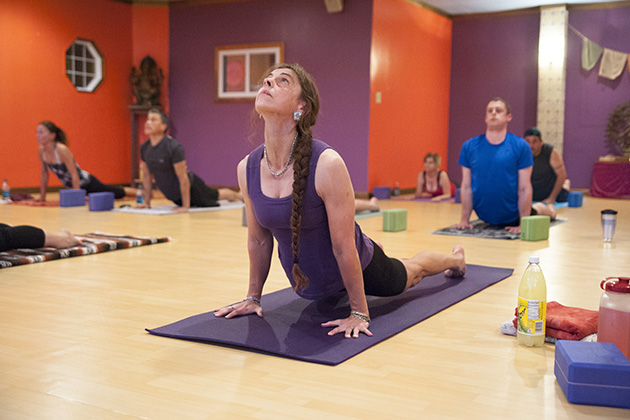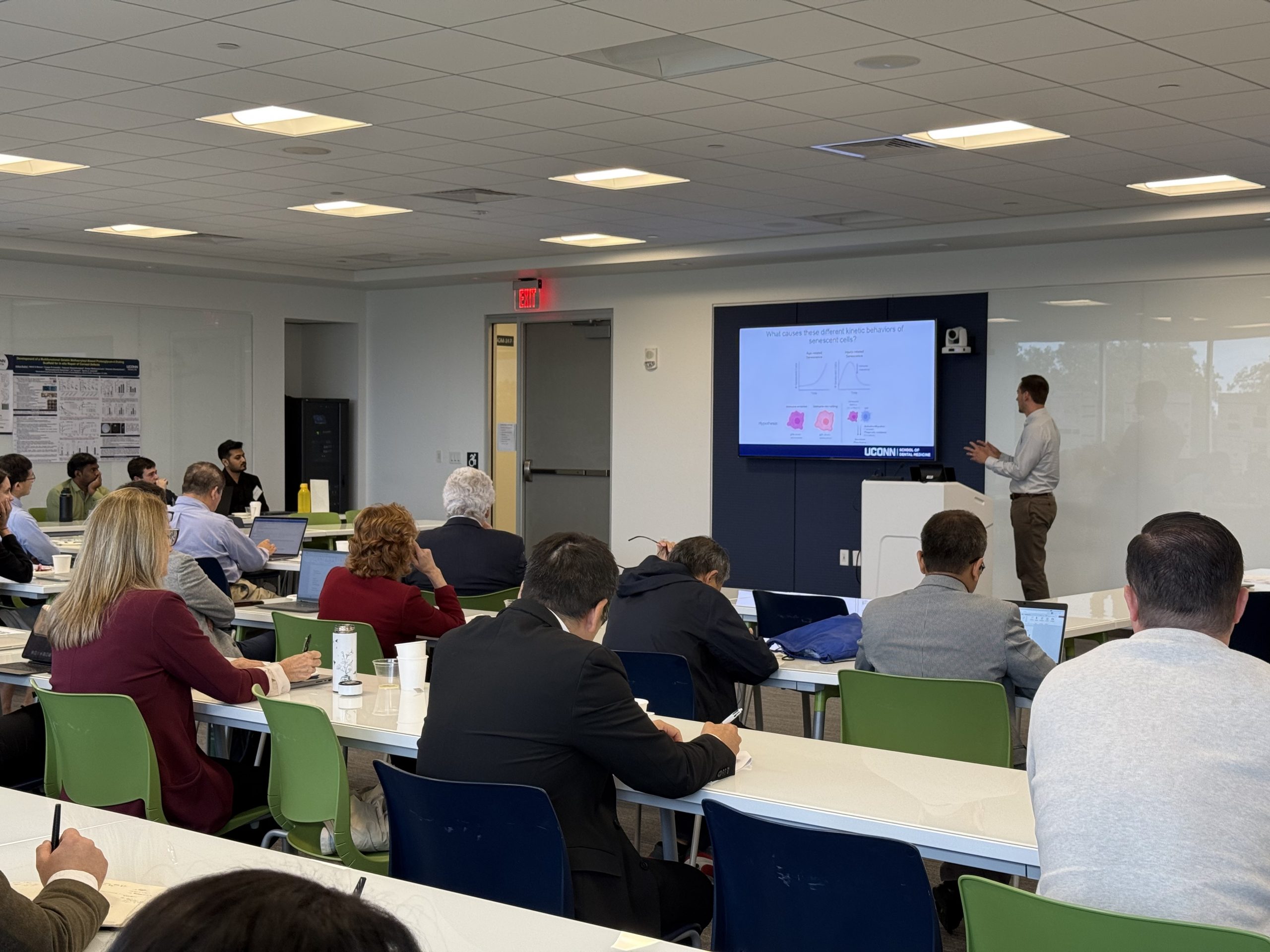
As the new year begins, millions of Americans will start off 2015 in pursuit of some resolution, whether it’s quitting smoking, landing a better job, or getting in shape for warmer weather. Many will likely turn to some form of yoga, a discipline that has exploded across the country in the last few decades. Yoga not only increases strength and flexibility, it has been shown to improve outcomes for people with everything from arthritis to asthma. Now, a pioneering study by a researcher at UConn’s Center for Health, Intervention, and Prevention (CHIP) has shed new light on why people start practicing yoga, and what makes them likely to stick with it over the long haul. The results suggest that it’s less about fitness, and more about faith.
The paper, published last summer in the Journal of Health Psychology, grew out of the personal experience of Crystal Park, the study’s lead author. A professor of psychology who has extensively studied the role of spiritual belief in the psychological reactions of people to high-stress situations, Park has also practiced yoga for more than 10 years, and over that time she became interested in examining why people are drawn to the practice. The scientific literature clearly showed that there were health benefits to yoga, but no one had studied why people do it.

To help answer that question, Park enlisted the help of Dechen Zezulka, the owner of Mystic Yoga Shala, the studio where Park practices. With Zezulka’s help, the research team conducted a nationwide survey of more than 500 yoga practitioners, including both students and teachers, to try and tease out what brought people into a yoga studio for the first time, and what kept them coming back. The results of the study listed the primary reasons to start a practice as flexibility and getting into shape, a list Zezulka says echoes her experience as an instructor, with the vast majority of first-time students hoping to recover from an injury, or just looking to develop the “yoga body.” But for many, that interest shifts over time.
“In the beginning, you are doing yoga,” Zezulka says. “Eventually, the yoga starts doing you. People come in for a superficial reason, [but] they start to become aware of what’s going on in their minds. That’s what keeps them coming back.” Zezulka’s intuition was borne out by the results of the study, where participants reported precisely the same sort of shift.
More than 60 percent of the study’s participants reported that their primary motivation for practicing yoga had changed over time, and a change was more likely to have taken place for people who had been practicing longer. While most people reported starting yoga for purely physical reasons, the primary motivations for long-term practitioners were not just about the body. Participants listed stress relief, a sense of community, and self-discovery among the reasons they kept coming to yoga, with “spirituality” as the most common answer.

That shift, from yoga as exercise to yoga as spiritual practice was familiar to Park through her own experience. “I started taking yoga at the gym for fitness reasons,” says Park, “solely for exercise. But I slowly found my way to the spiritual side.” This shift was particularly pronounced among yoga teachers, with more than 85 percent reporting that their motivations had shifted since their introduction to yoga, and nearly half claiming a spiritual component as their primary reason for continuing.
Park points out that there are aspects of the practice that seem to draw people toward spirituality. “The whole thing is very ritualized, very regimented … there’s a lot of spiritual aspects, even if you’re not overtly looking for that,” she says. “It’s all about connecting us together and connecting us to the universe. If you have openness to spiritual questing, there’s a lot of opportunity to go that way.”
Zezulka agrees, and highlighted that the students who return to her studio day after day all seem hungry for the more spiritual aspects of the practice. “If I do drop a little spiritual nugget, people come up to me after class and say how thankful they are.” Zezulka speculates that that spiritual hunger may be connected to the decline of organized religion in America. “I feel like a lot of people have become disillusioned with religion,” she says, “especially if there is judgment about other groups or other belief systems.”
Park agrees that organized religion seems to be waning in American life, “particularly demographically, among the more educated.” But she was less willing to speculate about about whether or not that was a driver of the spiritual questing reported by yoga practitioners, saying “I’d have to look at some data before I told you that.”
For now, Park is content to continue this ground-breaking work into the psychology of yoga practice, and has hopes to expand. Park hopes to look next at the motivations of men, who made up a small fraction of the study, and who represent a small minority of yoga practitioners nationwide. Once again, her instinct as a researcher is being guided by her own experience, as she hopes to uncover the motivations that drive men to practice yoga, because “mixed-gender group are different than all female groups,” she says. “It just feels more … normal.”


